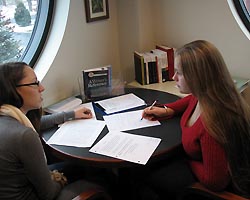A run-on sentence is more than just a  sentence that has a lot of words on it. There?s actually more to it than just a long list of words that may seem to stretch into various sentences. In reality, these sentences can either be short or long, which simply means that the length of these kinds of sentences is not the real issue at hand. We?ll go over some ways to recognize run-on sentences and how to fix them.
sentence that has a lot of words on it. There?s actually more to it than just a long list of words that may seem to stretch into various sentences. In reality, these sentences can either be short or long, which simply means that the length of these kinds of sentences is not the real issue at hand. We?ll go over some ways to recognize run-on sentences and how to fix them.
Identifying Run-on Sentences
Your first clue to identify this kind of sentence, and it is the most obvious one out there, is its length. If a sentence has more than 20 to 25 words in it without any punctuation marks then you can suspect it to be a run-on. However, that is not the only criteria you should use to identify this kind of sentence.
Sometimes you do see punctuation marks, which may include a lot of commas. This can still be considered a run-on in spite of the commas that the author used. It doesn?t matter if it includes a list as long as it still contains the key ingredient to make it a run-on.
Even though there are internal punctuations inside such a sentence as long as it appears to be a fusion of at least two sentences then you can say that that sentence is really a run-on. Both the length of a sentence and the observable fusion of two sentences are your main clues to identify whether a sentence is a run-on or not.
Fixing the Run-on Sentence
Fixing a run-on sentence may not be that easy for all people. If you basically don?t know what you?re looking for, then you could be stuck there thinking that there is nothing wrong with the sentence you just wrote. Fixing this kind of sentence will greatly depend on the elements of this sentence itself.
The most basic way to fix this kind of sentence is to place a period at the very end of the first train of words that can act as a sentence. This way you are breaking down the run-on into several sentences that can stand alone.
However, if the next section or clause of the sentence has a thought that seems to be just a continuation of the former clause then use a semicolon. This will indicate that the next train of words, though it can stand alone, is related to the former clause.
Remember that there are no hard and fast rules to fix all run-on sentences out there. It all variably depends on the tone that the author wants to set. Fixing sentences like these will require some analysis of the tone and sentence structure that the author uses.


